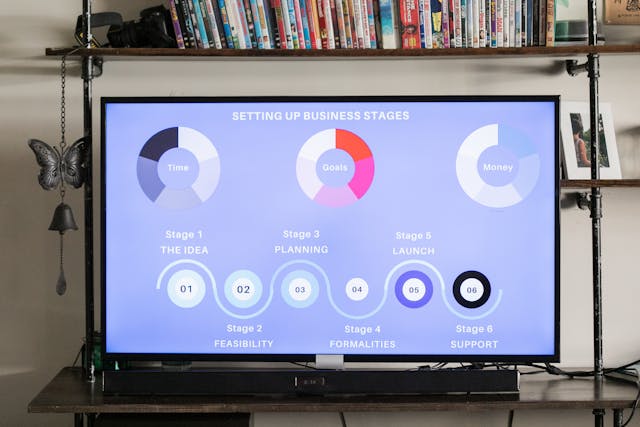Navigating Algorithm Changes: Adapting Your Content Strategy to Platform Updates
In the fast-paced world of digital content creation, one of the most constant challenges creators face is adapting to algorithm changes on social media platforms, search engines, and content hosting sites. These platforms—such as Facebook, Instagram, YouTube, Google, and TikTok—often update their algorithms, which can have a significant impact on how your content is distributed, discovered, and engaged with. Keeping up with these updates is crucial to maintaining visibility, engagement, and growth.
In this article, we’ll explore how to navigate algorithm changes and adjust your content strategy accordingly to ensure that you continue to reach your target audience and remain competitive in an ever-evolving digital landscape.

Understanding Algorithm Changes
Before you can adapt your strategy, it's essential to understand what an algorithm change is and how it can impact your content. An algorithm is a set of rules and processes used by platforms to determine which content is shown to users and in what order. Changes to these algorithms are often made to improve user experience, prioritize certain types of content, or respond to shifts in consumer behavior and technology.
For example, Facebook and Instagram have frequently updated their algorithms to prioritize content that sparks meaningful interactions—such as posts with high engagement—over simply showing the most recent posts. Similarly, YouTube often tweaks its recommendation system to promote videos that keep users engaged for longer periods, favoring content with higher watch times and audience retention.
These changes might result in your posts being shown to fewer people or your content’s visibility being impacted by how the algorithm now ranks it. Therefore, staying informed about these changes and adjusting your strategy is key to maintaining or growing your reach.
Stay Informed: Regularly Review Platform Updates
To navigate algorithm changes effectively, staying updated is essential. Social media platforms and search engines typically release announcements or blogs detailing updates to their algorithms. These updates might include everything from a shift in how content is ranked to a new focus on video content or a change in user preferences.
Here are some strategies for staying in the loop:
-
Follow Platform Blogs and Newsletters: Platforms like Google, Instagram, and YouTube have dedicated blogs where they announce algorithm updates. Subscribing to these can help you stay on top of the latest changes.
-
Join Industry Groups and Forums: Communities of content creators, marketers, and digital strategists often share insights and discuss algorithm updates. Platforms like Reddit, Facebook groups, and LinkedIn can offer real-time updates from professionals who are also affected by the changes.
-
Use Tools and Analytics: Leverage third-party analytics tools (like Google Analytics, Hootsuite, or SocialBakers) to monitor shifts in your content’s performance. These tools can provide valuable insights into how your content is being received and help you pinpoint areas for improvement when algorithm changes occur.
Evaluate Content Performance: Adapt to User Preferences
When algorithm changes affect your reach, it’s time to assess how your content performs. Each platform update is often a response to shifts in user behavior, so it's crucial to adapt your content to match these evolving preferences.
-
Engagement is Key: Platforms are increasingly focusing on engagement metrics—such as likes, shares, comments, and time spent on the platform—over simple vanity metrics like follower counts or views. Prioritize creating content that encourages interaction and fosters community-building. For instance, ask questions, host polls, or create content that sparks discussions.
-
Video and Visual Content: Many platforms have shifted towards promoting video content, especially short-form videos like Instagram Reels, TikTok, and YouTube Shorts. If your current strategy is heavily reliant on static images or long-form posts, consider diversifying into video formats to stay relevant.
-
Consistency Over Frequency: Algorithms often reward consistency over frequency. Instead of posting multiple times a day, aim to post consistently at the right times for your audience. Consistency in content style, theme, and messaging will help strengthen your brand identity.

Diversify Your Content Distribution Channels
Relying on just one platform for content distribution can be risky, especially when algorithms change unexpectedly. To future-proof your content strategy, consider diversifying where you share your content:
-
Cross-Platform Promotion: Share your content across multiple platforms to reach different audiences and mitigate the impact of algorithm shifts on one particular channel. For example, if your Instagram posts are not getting the engagement they once did, try directing your Instagram followers to your YouTube channel, TikTok, or blog.
-
Email Marketing: Building an email list remains one of the most direct ways to reach your audience without the interference of an algorithm. Encourage your followers to sign up for your newsletter, where you can share exclusive content, updates, and insights directly with your subscribers.
-
SEO Optimization: For platforms like Google and YouTube, SEO is key to maintaining visibility. Ensure your content is optimized for search by using relevant keywords, tags, descriptions, and captions. Google’s search algorithm continues to favor high-quality, authoritative content, so focus on creating informative, well-researched pieces that address user intent.
Focus on Long-Term Strategy, Not Just Short-Term Fixes
Algorithm changes can feel overwhelming, especially when they impact your performance significantly. However, instead of just reacting to each update, focus on building a long-term content strategy that can adapt to changes over time. Consider the following approaches:
-
Build a Loyal Audience: Rather than focusing on chasing trends or trying to game the algorithm, prioritize building a loyal community that engages with your content consistently. Foster a sense of trust and authenticity with your audience, and they will continue to support you even when algorithms shift.
-
Experiment with New Formats: Don’t be afraid to experiment with different types of content, especially when algorithms change. Experimentation can help you discover what works best for your audience, even when trends or algorithms change.
-
Use Data to Drive Decisions: Continuously monitor and analyze data on your content performance. This will help you understand what types of content are resonating with your audience, and where adjustments are needed. Regularly reviewing data allows you to stay ahead of algorithmic changes and fine-tune your content strategy accordingly.
Conclusion: Adapt and Thrive
Adapting to algorithm changes is a necessary part of maintaining an effective digital content strategy. By staying informed, assessing performance, diversifying distribution channels, and focusing on long-term goals, you can better navigate the ever-changing landscape of digital platforms.
Ultimately, remember that while algorithms may shape the way content is consumed, the core of your strategy should always be centered on delivering value to your audience. Stay flexible, continue to innovate, and your content strategy will thrive despite the inevitable shifts in algorithms.












